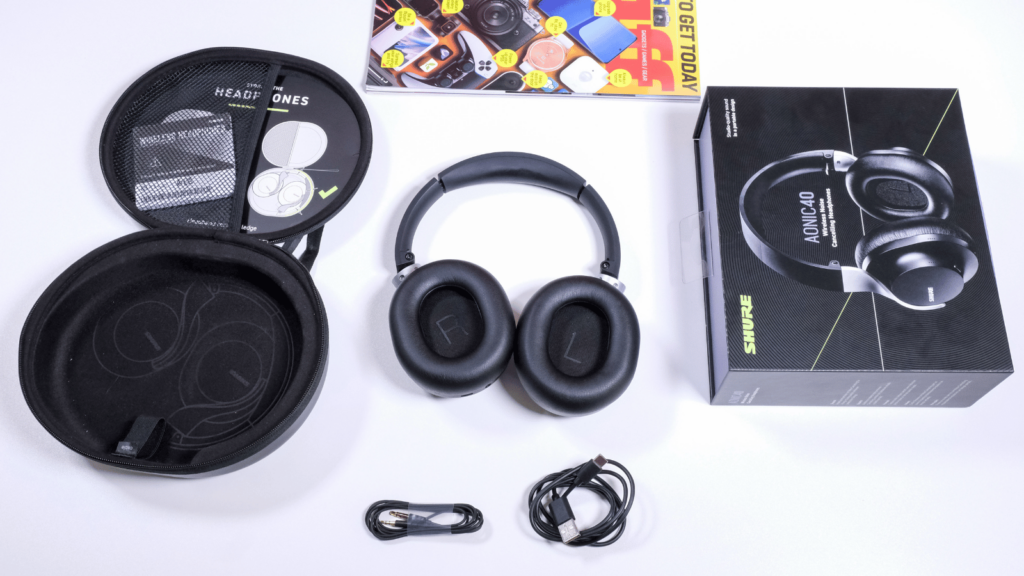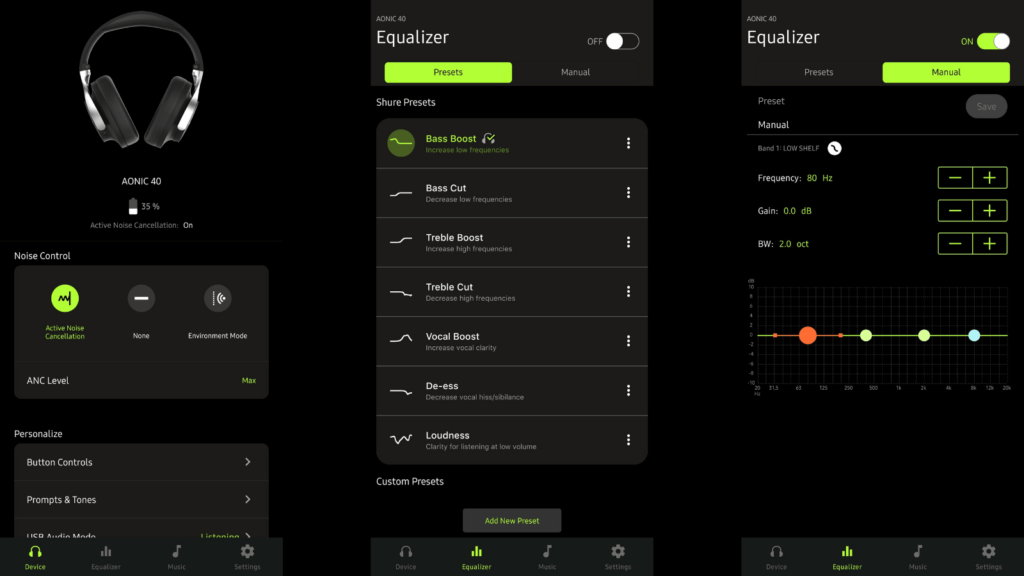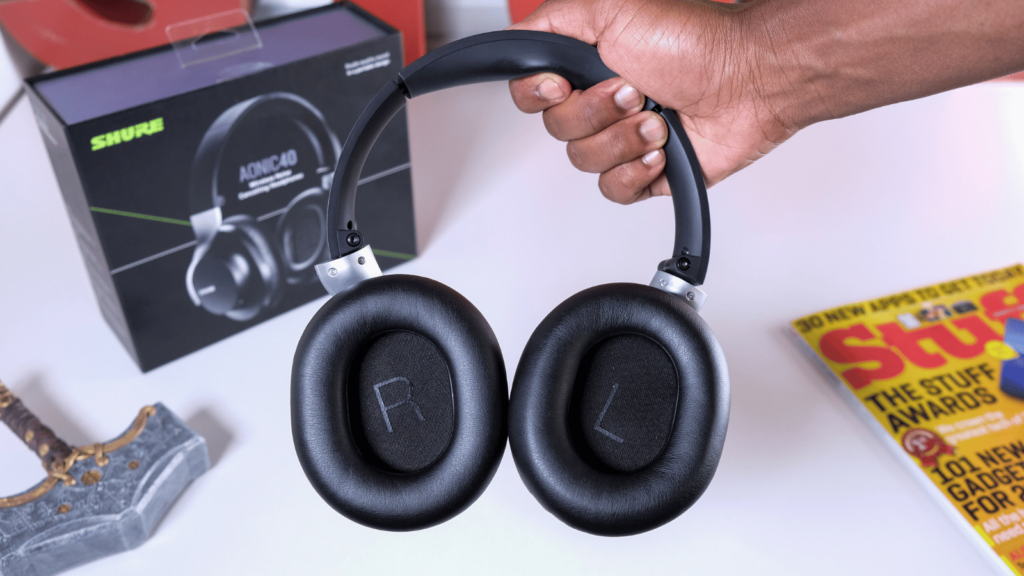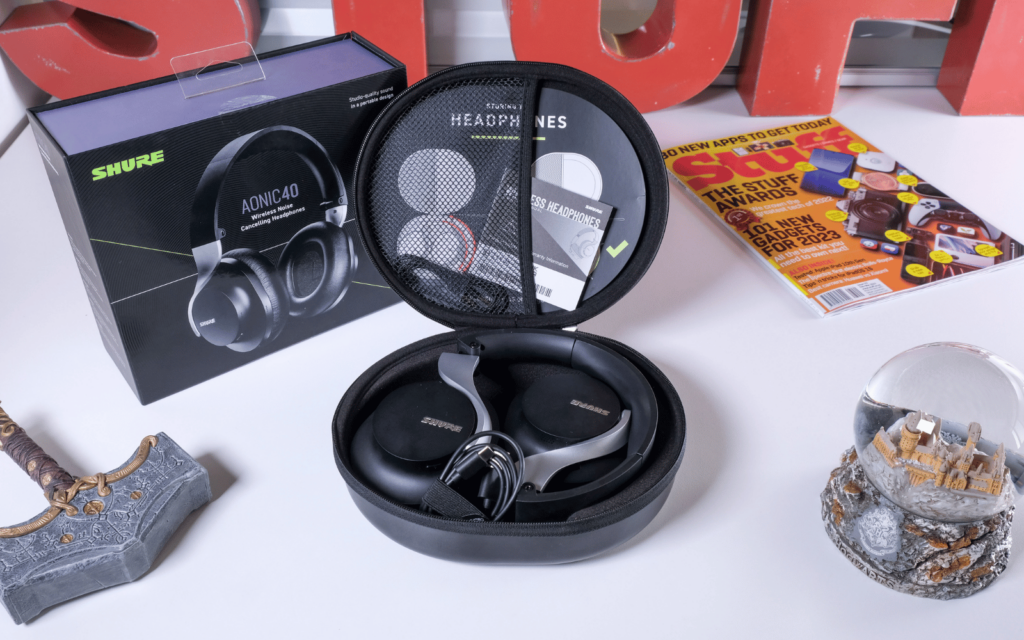As much as we liked the Shure Aonic 40's relatively accurate response, handy companion app, and tempting price point, it can't quite reach the heights of the competition when it comes to overall performance.
-
Design
-
Sound
-
Build
-
Battery
-
Features
-
Price
There hasn’t been a shake-up in the premium wireless active noise-cancelling headphone scene in a rather long time. Anyone that knows at least a little about the industry could probably list the companies and their products that sit atop most critics and reviewers ‘best of’ lists. If you’re trying to do that now and said Sony, Bose, Apple, and Sennheiser, you’d be spot on.
But that hasn’t stopped other companies from trying to compete for a spot among the best. Shure is one of those companies with its Aonic range of products. We’ve spent some time with Shure’s over-ear Aonic 40 headphones to find out if they deserve a spot in those lists. Unsurprisingly, the answer depends on a few things.
Looks the part
 Most people buying premium wireless headphones will want to get their money’s worth in at least a few criteria. That’s what makes them ‘premium’ after all.
Most people buying premium wireless headphones will want to get their money’s worth in at least a few criteria. That’s what makes them ‘premium’ after all.
Shure’s designers have opted for an understated look with the Aonic 40. They’re pleasant enough to look at for the few seconds between taking it out of the case and plonking it on your head. The ear cups will envelop all but the largest ears and feature a slight lip that serves as a place to put the physical control buttons.
The headband, which attaches to the back of each cup, follows the cup’s contours as it curves up and over until it meets a hinge on either side. Hinges mean the headphones can fold up in their case, taking up less space in your travel bag. This design also allows for a good amount of ear cup movement, making a comfy fit easier to obtain on different-sized heads. Whether or not you’ll find them comfortable will depend on you, and how much you like your head being squeezed.
While a strong clamping force usually helps with noise isolation, we found the Aonic 40 to be a little too tight after a while. This caused some discomfort and made taking regular breaks necessary. Though, this might not be the case for everyone and could dissipate with long-term use.
Available in either black and silver or white, silver, and tan colourways, Shure’s Aonic 40 have a premium-feeling all-plastic construction, save for the faux foam on the ear cups and headband. During normal use, the construction felt sturdy enough for us not to worry about an accidental drop and we didn’t notice any creaking or cracking.
Surprisingly capable
We were pleasantly surprised by the audio performance from the Aonic 40. We had some preconceived ideas about how we expected them to sound but were happily proven wrong. Although we were initially impressed with the somewhat accurate tuning out of the box, critical listening will reveal a slight ‘V-shaped’ response.
As a quick reference, the ‘accuracy’ we’re referring to is how closely the headphone’s frequency response matches the ‘Harmon target curve’. This is a scientifically researched frequency response target that depicts the optimal sound signature that most people prefer. It was developed by Dr. Sean Olive and his team at Harman Audio in 2013. You can read more about it here.
 That ‘V-shaped’ tuning results in some emphasis on the bass and high frequencies. This emphasis was fairly isolated and didn’t extend across the entirety of either frequency range, but it is nevertheless perceptible to a critical ear. But that’s not to say it’s entirely a bad thing.
That ‘V-shaped’ tuning results in some emphasis on the bass and high frequencies. This emphasis was fairly isolated and didn’t extend across the entirety of either frequency range, but it is nevertheless perceptible to a critical ear. But that’s not to say it’s entirely a bad thing.
The Aonic 40 generally offers a good casual listening experience in pretty much any genre. And if you want more control, you can have it via the ShurePlus PLAY companion app. The app offers an excellent amount of EQ customization. There are several EQ presets to choose from or you can duplicate, adjust and save a preset or create your own from scratch.
Packed to the brim
 The app also displays battery life, contains a handy guide for the button controls, and offers controls for switching between listening modes. You can forego the listening modes (which we did while testing the sound quality) or you can opt for the adjustable ANC or ‘environment’ modes.
The app also displays battery life, contains a handy guide for the button controls, and offers controls for switching between listening modes. You can forego the listening modes (which we did while testing the sound quality) or you can opt for the adjustable ANC or ‘environment’ modes.
We found the Aonic 40’s ANC performance to be rather mediocre. In our fairly quiet office, enabling ANC did lessen the drone of the generator outside during load shedding, but we still managed to follow most of the office conversations. We also found that the ANC mode affected audio playback and was affected by our changing head position. If you’re moving your head around a lot this can become rather annoying so we mostly kept ANC off. That powerful clamping force does help a little with noise isolation but this is one area where the Aonic 40 can’t quite match the competition.
Other useful features include support for connecting to multiple devices simultaneously via Bluetooth connection, a feature we wish was more commonplace. In our tests, with the headset connected to our Galaxy S23 Ultra and Asus TUF laptop, it switched from our laptop to our smartphone automatically when we received a call while listening to music. After the call, we resumed music playback on the laptop and it switched back. What more could you need?

Shure claims the Aonic 40 can last for “up to” 25 hours on a single charge. We didn’t have a stopwatch going for the entire review but we managed to get through most of a full workweek with around six hours of use a day, the odd phone call, ANC disabled, and Bluetooth multipoint enabled before needing a charge. Your results could vary, especially if you enable ANC.
And when you do eventually need to recharge them, 15 minutes will net you roughly 5 hours of playback time. If you’re running low on juice and aren’t near an outlet, you can also switch to a wired connection with the included 3.5mm aux or USB-C cable but that’s going to affect the audio performance.
Shure Aonic 40 verdict
After all that, we suppose we should probably answer our question of whether the Shure Aonic 40 deserves a spot in ‘best of’ lists among the likes of Sony, Sennheiser, and Bose. As much as we liked the relatively accurate tuning, we’d be lying if we said we’d pick the Aonic 40 over Sony’s WH-1000XM5 (R9,500) or Bose’s QuietComfort 45 (R9,000) headphones based on ANC and audio performance respectively. Shure’s great feature set and companion app aren’t enough to pull the Aonic 40 ahead.
But both those headphones are more expensive than the Aonic 40. When you can find one locally, you can expect to pay around R8,000, depending on where you look.
So, if we were to compile a list of ‘premium headphone alternatives’, the Aonic 40 would have a much better chance at making that list than trying to compete with the industry titans.






